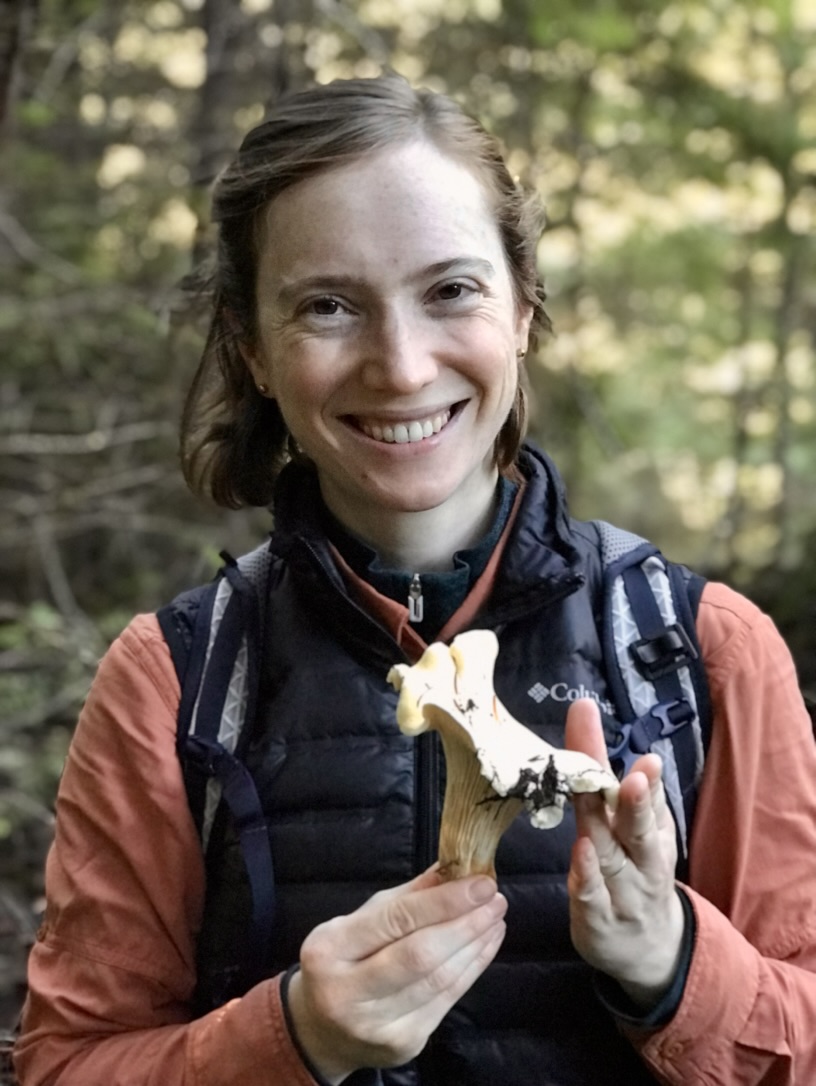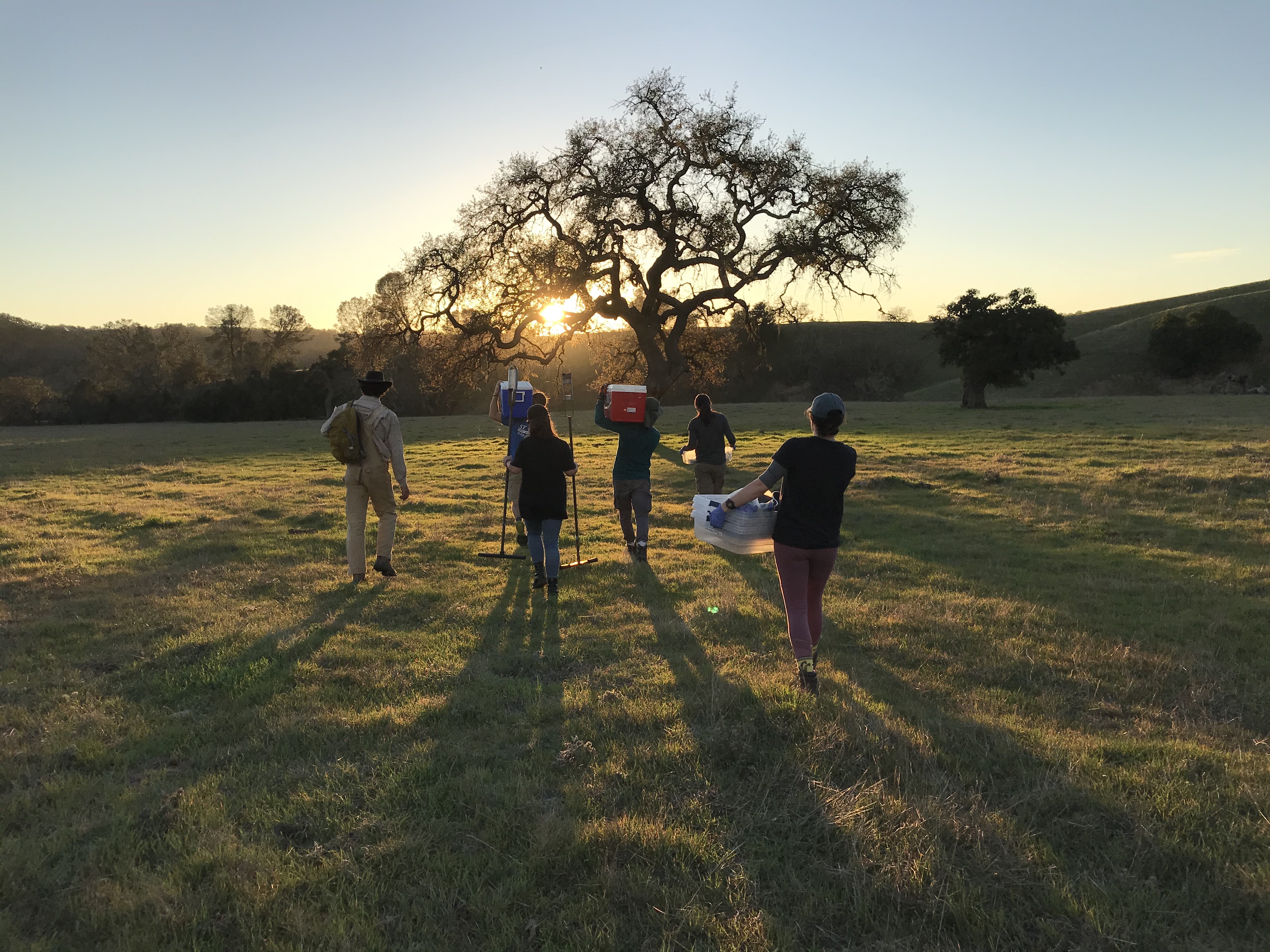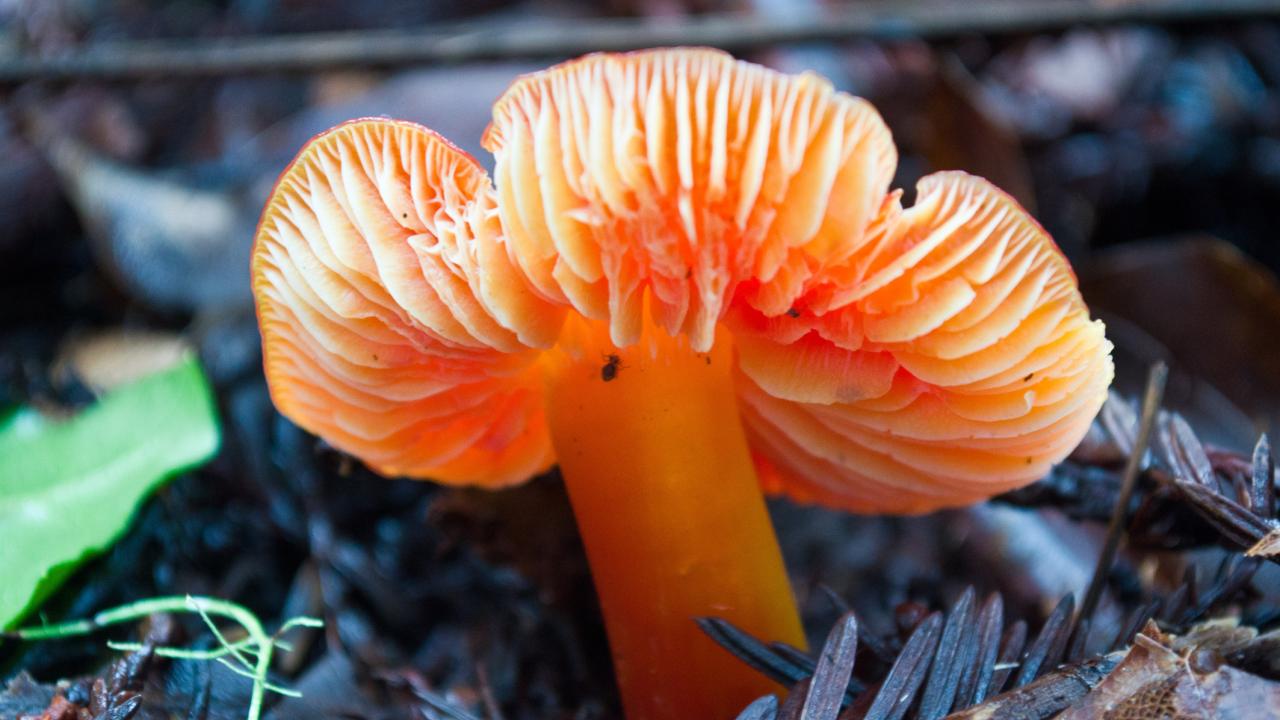I’m clearly in the office of a fungi researcher: mushroom posters on every wall, whiteboards packed with ideas and Thelephora fungal cultures growing in the corner of the office so as to not contaminate the greenhouse. Laura Bogar, a new UC Davis assistant professor in the College of Biological Sciences, showed up to her interview in field gear, prepped to go out that afternoon.

When asked what her favorite mushroom was, Bogar gave the utterly classic science answer: “It depends.” After an intense internal debate, she landed on the new California state mushroom: the California golden chanterelle. Then she led me into her lab to smell the maple-syrupy scent of candy cap mushrooms.
Bogar began her position at UC Davis in July 2022 and has since been growing her lab and her focus on plant-fungal interactions.
Research rabbit holes
Ever since Bogar was an undergrad, she had questions: “Why? Why are there so many mushrooms out there? And they’re on trees? Why do some trees only grow with certain ones?” These questions motivate her research.
Bogar got her start with the core motivation to work outside. Like many outdoor enthusiasts, becoming a park ranger was her original dream. But questions about patterns and biodiversity were always looming around her head, and she constantly found herself looped into a Wikipedia-like rabbit hole.
“A research career is like that rabbit hole, but for real,” Bogar joked. “There is a job where you just ask questions, learn a bunch of tools and then literally answer the questions that nobody has answered before. Then you tell people about it. Isn’t that just incredible?”
Chemical romance
No less incredible is her subject matter.
One cubic centimeter of soil may contain miles of fungal mycelium. Bogar studies a group of these soil fungi, better known as mycorrhizal fungi, which are often in cooperative relationships with plant roots. Mycorrhizal fungi can benefit their host plant in a variety of ways, including pathogen protection, increased nutrient and water uptake, and drought resistance.
Bogar is working to understand how these root interactions develop through time, and how they compare throughout different combinations of plants and fungi.

The relationship between a fungus and its host plant is complex, Bogar says. Romance, right? Both the plant and the fungus have to discern whether they are a good fit for each other: The plant determines whether the fungus is a pathogen or potential symbiont, and the fungus decides if the plant is a potential host or not.
“There’s a lot of chemical crosstalk early on in the relationship,” Bogar said.
She hopes to understand the chemical and genetic nature of how both partners make their decision and the diversity of these associations.
“You might expect a root system to just have one fungus, the best fungus the tree can find. And that’s not what we see.”
Bogar wants to explain this form of soil biodiversity, and is working on understanding if trees reward or punish certain fungi with varying resources. One way she does this is by tracking the carbon the plant allocates to each fungus.
Carbon allocation and climate change
Carbon allocation can be an important component of broad-scale climate change research. As we continue to dump carbon dioxide into the atmosphere, the relationships between trees and soil fungi will have important implications for how fast carbon moves through the landscape.
Bogar aims to understand how much carbon a plant puts into its symbioses and how the allocations change as atmospheric carbon dioxide increases and alters the environment. She conducts seedling experiments to understand how symbioses and resource allocations change under different stressors.
Bogar seems to have an endless list of projects and research questions. Her other main project — “at least this week,” she said — is understanding how soil microbial communities shift with soil depth in oak trees.
Learn more about her research projects in UC Davis Professor of Teaching Joel Ledford’s podcast, Tree of Life UC Davis.
Malia Reiss is a science news intern with UC Davis Strategic Communications. She studies environmental science and management at UC Davis.
Media Resources
Kat Kerlin, UC Davis News and Media Relations, 530-750-9195, kekerlin@ucdavis.edu
